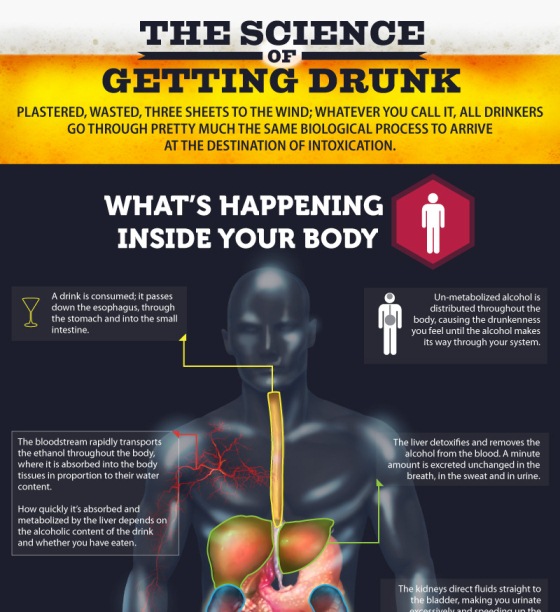Uncover the secrets of intoxication with a scientific breakdown on how many beers it takes to get you tipsy.

Image courtesy of Anete Lusina via Pexels
Table of Contents
As we gather with friends or unwind after a long day, many of us have wondered: how many beers does it take to get drunk? The answer to this question is not as straightforward as it may seem. In this blog post, we will dive deep into the science of alcohol metabolism, individual tolerance levels, and various factors influencing intoxication levels.
Understanding Alcohol Metabolism
Alcohol metabolism is a complex process that begins as soon as you take your first sip. When you consume alcohol, it is absorbed into your bloodstream through the stomach and small intestine. From there, the alcohol travels to the liver, where it is broken down by enzymes. The rate at which alcohol is metabolized can vary depending on a variety of factors.
One key factor that influences alcohol metabolism is the rate at which alcohol is absorbed into the bloodstream. Factors such as the concentration of alcohol in the drink, the presence of food in the stomach, and individual differences in metabolism can all impact how quickly alcohol is absorbed. Additionally, factors such as age, gender, and liver function can also influence how efficiently the body breaks down alcohol.
The concept of blood alcohol concentration (BAC) is a key indicator of how drunk a person may feel. BAC is a measure of the amount of alcohol present in a person’s bloodstream, typically expressed as a percentage. The legal limit for driving under the influence is often set at a BAC of 0.08% in many countries.
Individual Tolerance Levels
Individual tolerance levels play a significant role in determining how many beers it takes to get drunk. Tolerance refers to the body’s ability to handle certain amounts of alcohol before feeling intoxicated. Factors such as genetics, body weight, and liver function can all influence a person’s tolerance level.
For example, individuals with a higher body weight may be able to drink more before feeling intoxicated compared to those with a lower body weight. Additionally, genetics can play a role in determining how efficiently the body metabolizes alcohol. People with a family history of alcoholism may have a lower tolerance for alcohol compared to those without.
Understanding your own tolerance level is crucial for responsible drinking. It is important to know your limits and pace yourself when consuming alcohol. Pay attention to how you feel after each drink and be mindful of the effects that alcohol has on your body.
Influencing Factors on Intoxication
Several external factors can influence how drunk you feel after drinking. One key factor is food consumption. Eating a meal before drinking can help slow the absorption of alcohol into the bloodstream, potentially reducing the effects of intoxication. Similarly, staying hydrated while drinking can help dilute the alcohol in your system and lessen its impact.

Image courtesy of www.infographicszone.com via Google Images
The pace at which you consume alcohol can also impact how drunk you feel. Drinking quickly can lead to a rapid increase in BAC, potentially leading to feelings of intoxication. It is essential to pace yourself and give your body time to process the alcohol.
Knowing your limits and practicing moderation are essential for responsible drinking. Understanding the factors that influence intoxication levels can help you make informed decisions when consuming alcohol. Remember to prioritize your health and well-being when enjoying a drink with friends or relaxing after a long day.
Conclusion
In conclusion, the question of how many beers it takes to get drunk is a complex one with no definitive answer. Alcohol metabolism, individual tolerance levels, and various influencing factors all play a role in determining intoxication levels. By understanding the science behind intoxication and practicing responsible drinking habits, you can enjoy alcohol safely and responsibly.
We encourage you to take the time to learn about your own tolerance level and listen to your body when consuming alcohol. Remember that moderation is key, and always prioritize your safety and well-being when enjoying a drink. Cheers to making informed decisions and enjoying alcohol responsibly!
Frequently Asked Questions
How many beers does it take to get drunk?
The number of beers it takes to get drunk varies for each individual based on factors like body weight, metabolism, and tolerance levels.
What influences how drunk you feel after drinking?
Factors such as food consumption, hydration, drinking pace, and individual tolerance levels can all influence how intoxicated you feel after drinking.
How does alcohol metabolism affect intoxication?
Alcohol metabolism involves the breakdown of alcohol in the liver, which can vary in speed depending on factors like the concentration of alcohol consumed and individual differences in metabolism.
Why is knowing your tolerance level important?
Understanding your tolerance level is crucial for responsible drinking to prevent overconsumption and potential negative effects on your health and well-being.
Generated by Texta.ai Blog Automation
Leave a Reply